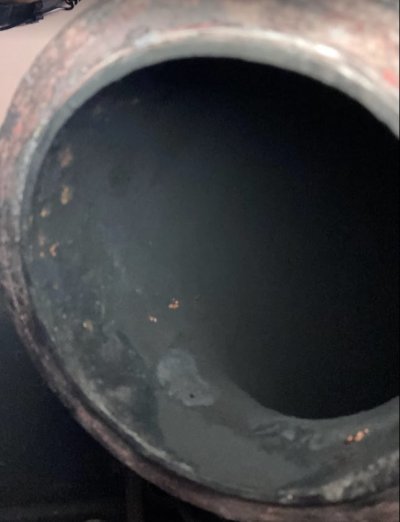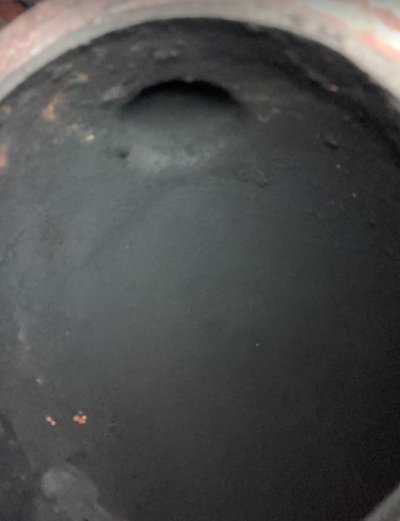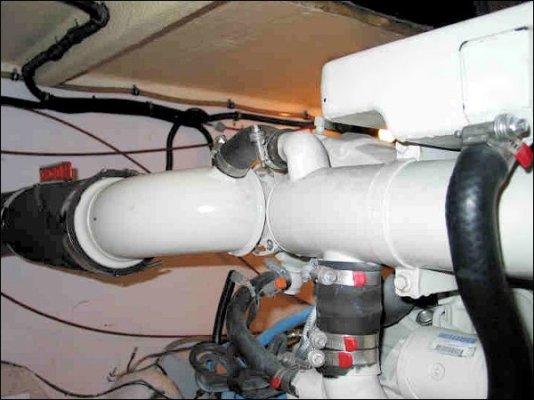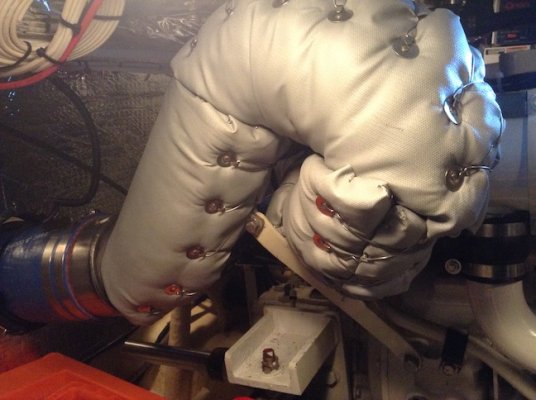garmstro55
Senior Member
I have twin Yanmar 4LHA-STP engines on a Mainship I bought in 2018. Previous owner said the elbows were recently replaced but didn't have the exact dates.
Earlier this year a Yanmar mechanic was doing a valve adjustment and mention the elbows might need replacing by observing a small amount of external surface rust.
Yesterday I attempted to take one of the elbows off to inspect. Unfortunately is was stuck in the exhaust hose and I ran out of time to remove it. However, I did get a couple of photos looking inside the elbow.
I would appreciate any opinions as to the condition of the elbow as best as can be determined from the pictures. It looks ok to me but I am no expert.
Also to be noted, the elbow exhaust temperatures were measured last summer with an infra-red thermometer to be around 125 degress F. I was told by someone else that 190 to 200 was an indicator of a bad elbow, so is 125 an indicator of a good one?
Thanks.
Earlier this year a Yanmar mechanic was doing a valve adjustment and mention the elbows might need replacing by observing a small amount of external surface rust.
Yesterday I attempted to take one of the elbows off to inspect. Unfortunately is was stuck in the exhaust hose and I ran out of time to remove it. However, I did get a couple of photos looking inside the elbow.
I would appreciate any opinions as to the condition of the elbow as best as can be determined from the pictures. It looks ok to me but I am no expert.
Also to be noted, the elbow exhaust temperatures were measured last summer with an infra-red thermometer to be around 125 degress F. I was told by someone else that 190 to 200 was an indicator of a bad elbow, so is 125 an indicator of a good one?
Thanks.





